The world is changing for the good. I grew up in a world where weightlifters, powerlifters, and bodybuilders ran in separate groups. There wasn’t a whole lot of crossing over. As a matter of fact, there was quite a bit of bickering about which modality is actually best. Who really is the strongest man in the world? Which is best for coaching team sports athletes? Which one makes you a real man or woman?
For several years now the best strength and conditioning coaches have been combining multiple disciplines for the benefits of their athletes. Guys like Coach Joe Kenn have the ability to apply the benefits of each discipline to the sport that they are coaching. The keys that you will need to consider are:
- What are the benefits of each discipline?
- How does one combine the different disciplines in a way that is beneficial to the athlete?
With the onset of CrossFit, people from all walks of life have been introduced to the barbell and fitness. People are coming into the barbell world without preconceived notions of the way things should be. These same people are teaching old dogs like me that these preconceived notions are pretty dumb in the first place.
Does one need to stick to one discipline?
I fell in love with the barbell because I wanted to be strong and muscular. I wanted to look and feel like the Incredible Hulk. I wanted to be known as strong throughout the world. I didn’t start this whole thing because I wanted to be known as a great weightlifter or powerlifter. I just wanted to be strong.
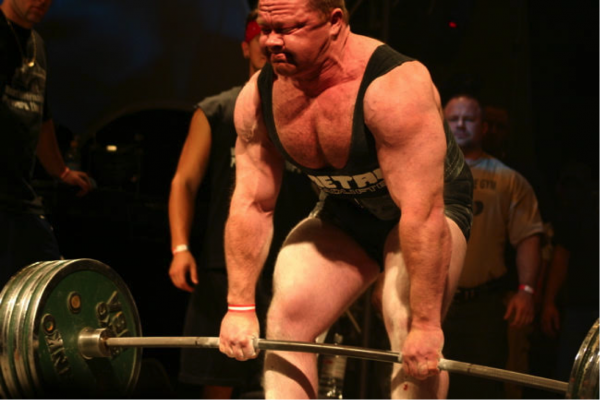
This is the same reason that I love having weightlifters, powerlifters, CrossFitters, and strongmen at my gym, LEAN Fitness. I am intrigued by all the disciplines, and I love watching our athletes get stronger in each. At the end of 2015, I competed in my first and only SuperTotal, and that was one of the most fun experiences of my strength career. Combining weightlifting and powerlifting in training and competition was an incredibly challenging venture, but one that was incredibly fun. I was able to not only perform the five lifts, but I was able to combine them at a fairly elite level especially for a 42-year old man with the following result:
- Back Squat 295kg/650lb
- Bench Press 184kg/405lb
- Deadlift 317.5kg/700lb
- Snatch 135kg/297lb
- Clean & Jerk 166kg/365lb
CrossFit has taught us that we can do whatever we want. We can combine weightlifting with powerlifting. We can combine powerlifting and bodybuilding.
This is a look at how one could combine weightlifting, powerlifting, and bodybuilding. Let’s call it the Ultimate Jacked Program. There’s a reason that Pyrros Dimas is everyone’s favorite Olympic Weightlifter. Yeah, he won 3 Olympic Championships, but so did Naim Suleymanoglu. We love him because we all love the cover of Milo with his abs bulging out from under his singlet. He looked like a Greek Statue.
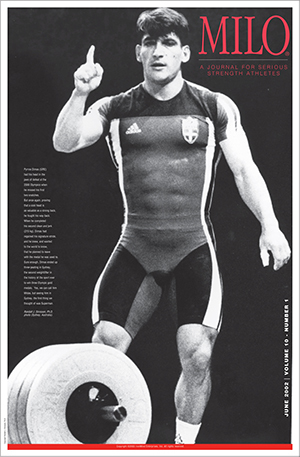
Pyrros Dimas Photo credit: Ironmind
How many gyms across the country have posters of Lu Xiaojun with his shirt off? I mean dang the dude is jacked, and it’s cool. These guys look like heroes.
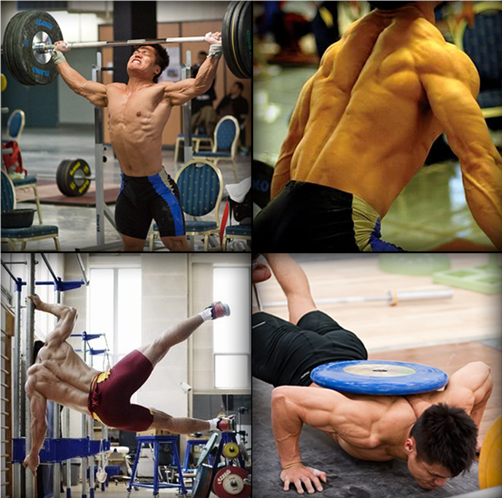
Lu Xiaojun
On the other side of the aisle, Ed Coan and Dan Green could easily pass as bodybuilders. Why do you think Dan Green is the most popular powerlifter? Yeah, he’s strong but mainly it’s because he’s strong AND jacked.
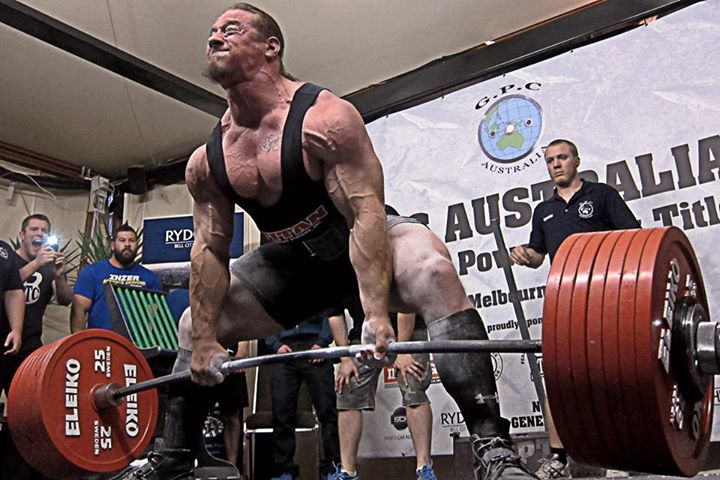
Dan Green
Personally, I don’t know many champion powerlifters that aren’t jacked. Look at Dr. Layne Norton, a world-class powerlifter AND bodybuilder. His programs and training methods reflect combining the two together and it produces and incredible physique along with loads of strength.
[thrive_leads id=’9264′]
Combining the two only makes sense. The quickest way to make a muscle stronger is to make it bigger. That’s one of those absolutes that’s impossible to argue.
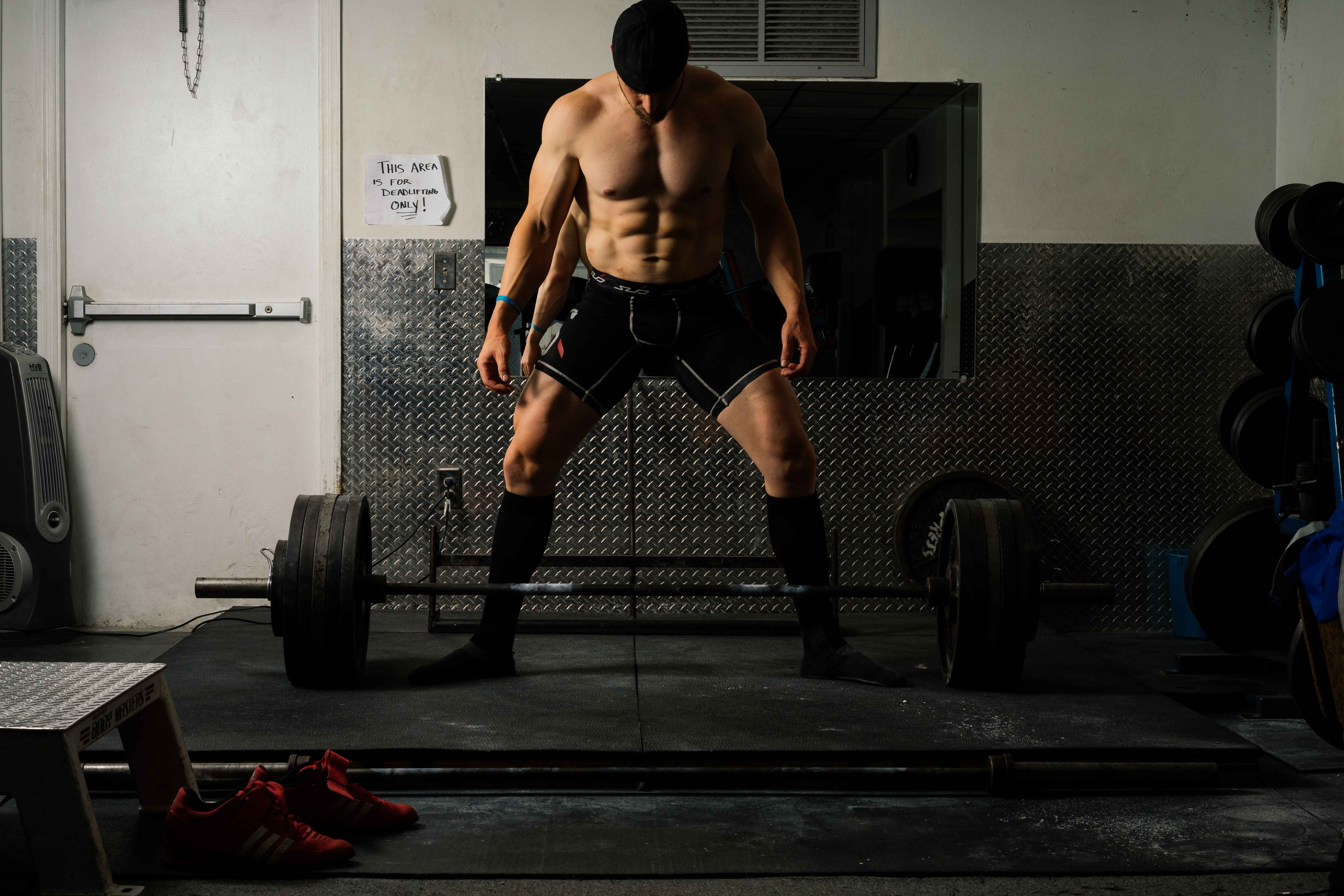
Layne Norton, Ph.D. Check out his Powerlifting/Bodybuilding Combo Program here.
So how do we combine these three awesome sports? Let’s look more deeply into combining these disciplines.
Pros and Cons of Each Discipline
Olympic Weightlifting
When you consider peak power and rate of force development, it’s hard not to consider the Snatch and Clean & Jerk. There are other benefits as well:
- Kinesthetic awareness
- Balance
- Mobility
- Speed
- Force absorption
These are all tangible qualities needed on the field or court as an athlete. However, there are some concerns with the Olympic lifts. The biggest issue that most strength coaches have with the Olympic lifts is the rate of application. The snatch and clean & jerk can take months to teach to some athletes in a perfect setting. When you are tying to teach the lifts to hundreds of athletes, it’s even harder.
If you are a strength coach, your job is to prepare your athletes for their sport. It’s not to make them good at the Olympic lifts. You need to make them stronger, faster, and more mobile. There are other ways besides the snatch and clean & jerk. With that being said, a good thought out system can teach athletes to perform the lifts with competency with a solid 15-20 minutes per day. Coaches like Spencer Arnold are showing that it can be done in high schools with mediocre athletes. If you are a capable coach with Division I athletes, the process should be even easier.
The final point is that a coach needs to be proficient in teaching the Olympic lifts. You can’t go to a weekend seminar and decide to teach the lifts. As a coach, you will have to put your time in. I suggest finding a mentor to learn the lifts correctly. Your time will be well spent.
If you are not an athlete and just want to learn the lifts, I say go for it. There is nothing more exhilarating in the weight room than performing the perfect snatch. It’s like performing the perfect swing on the golf course, but you are doing it with heavy weight. Nothing is more athletic and cool in the weight room. Like I said, there will be a pretty long learning curve, but dang it, you are going to love it when you actually get it.
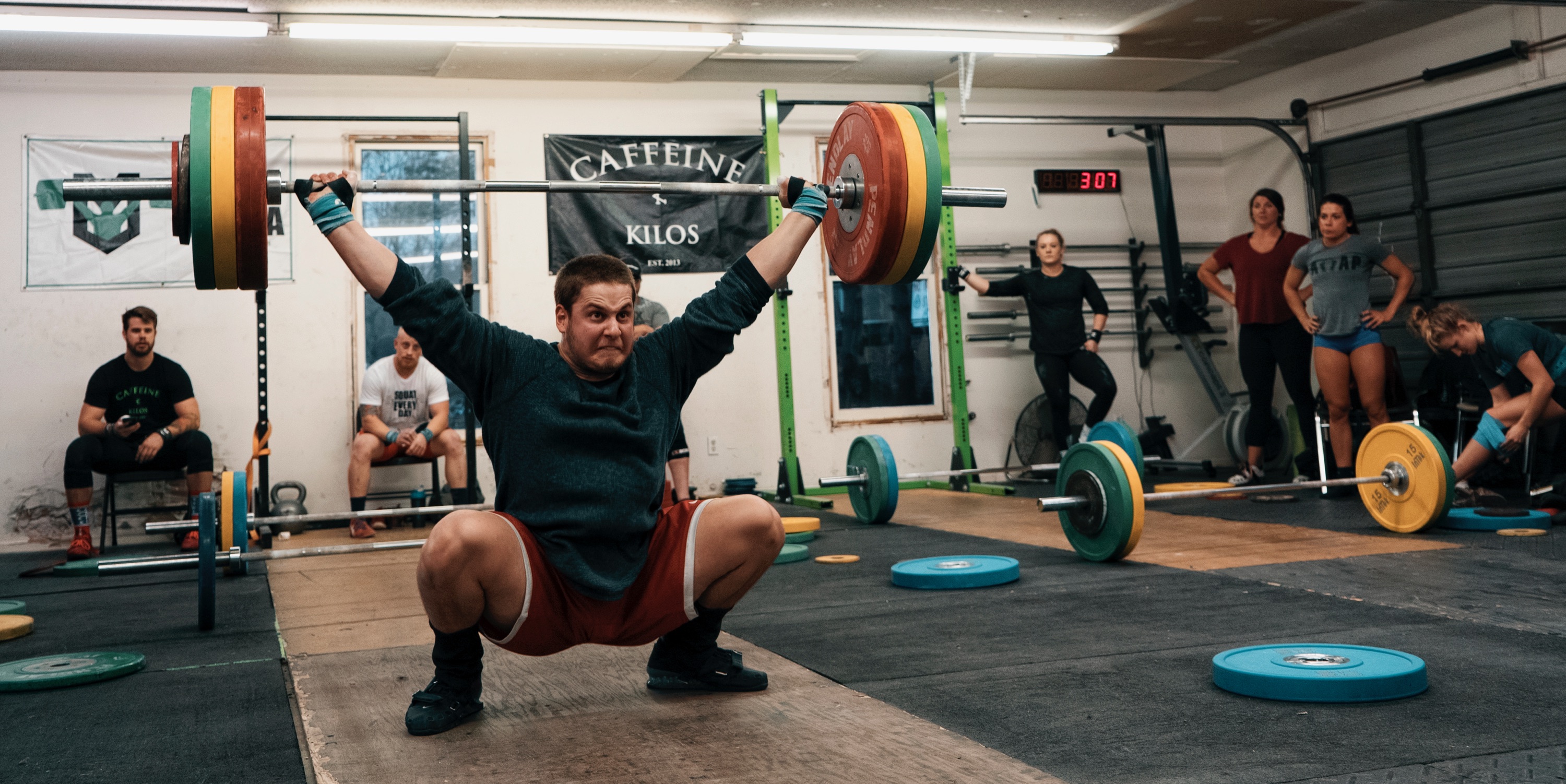
Powerlifting
The squat, bench press and deadlift are great ways to add muscle and increase absolute strength. When it comes to developing the vertical leap and the 40-yard dash, there are three things that can directly affect their improvement:
- Body Composition
- Back Squat
- Clean
It goes in that order. Yes, that’s right, the back squat correlates better than the clean. I’m not big on absolutes, but I am not sure how you have a credible strength and conditioning program without a form of squatting. The Powerlifts are great for absolute strength. For about the first two years of an athlete’s training life, absolute strength will improve all the qualities of strength. After that, you will need to get more specific in your training.
The Powerlifts are also great for adding muscle mass and preparing athletes to not get injured. General strength and muscle mass are what most athletes need to produce force, absorb force, and to survive an impact. Velocity devices allow strength coaches to improve all qualities of strength without the lengthy learning curves of the Olympic lifts. The Powerlifts are simple and effective.
The disadvantage of the Powerlifts is decreased quality of movement. You can check out any great powerlifter, and they’re not going to move like a great Olympic weightlifter. There are points of diminishing returns on all the lifts for sports athletes. Once you are back squatting and deadlifting two-times body weight and bench-pressing 1.5 times body weight, it would be wise to consider move specificity in regards to one’s sport.
Bodybuilding
Bodybuilding is a discipline of strength that should cross all borders. A symmetrical body is a strong and stable body. If we all had perfectly balanced bodies, there would be very few injuries in the gym. However, ‘perfect’ doesn’t exist this side of heaven. We can only strive to create the most perfect version of our own bodies.
Bodybuilding is for so much more than just looks. Of course, we want to get jacked, but there is way more to it. If powerlifters just performed the competition lifts, they would be all kinds of asymmetrical. Their internal rotators would be tight, and their external rotators would be weak. The anterior portion of their bodies would dominate the posterior. All of this could lead to overuse injuries, and all too often does.
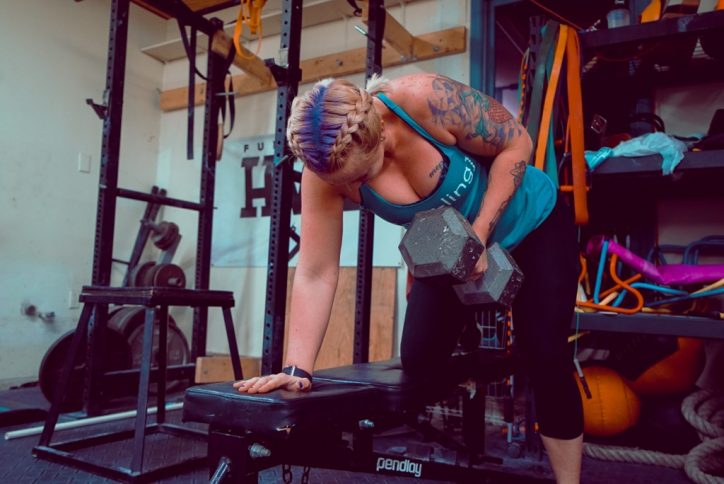
If weightlifters only did their competition lifts, their lower bodies would dominate their upper bodies. This is something that you see quite frequently in weightlifting. Athletes will have tree trunk legs and glutes, and their upper body will look like it belongs to some teenage video game player tucked away in their parents’ basement. This can lead to some major overhead stability issues and injury.
Hypertrophy work/Bodybuilding is something that most great strength athletes continue right up to competition time. You can watch the Chinese weightlifting team crushing lateral raises and dips in the training hall of any World Championships (well unless they are banned). Louie Simmons would tell you to focus on hypertrophy more in the end and less on the competition lifts. I am not all the way in that camp, but my guys and gals will definitely be getting their pump on right up to competition time. I want strong and balanced athletes.
The only con is that bodybuilding can lead to a lot of non-functional muscle if left to itself. There are plenty of weak bodybuilders that can’t tie their own shoes, and that has no place in athletics. However, that can be avoided with a focus on full ranges of motion and continuing to perform one’s competition lifts. That’s the recipe for a jacked, strong, and athletic athlete. That’s how you get a poster made of you like Pyrros Dimas.
So Now What?
So now that I have listed the pros and cons of each popular discipline of fitness, how do we fit them together? This is the fun part. This is the part that most coaches of the past are totally against. However, guys like Coach Joe Kenn and Greg Nuckols are asking the question, “why not?”
I have been asking the same question about powerlifting and weightlifting for quite some time since I competed in both at a very high level. I love both disciplines of strength, and I’ve always enjoyed performing both. CrossFit has taught the world that you can do whatever you want. The key is how to best put them together.
Questions you have to ask yourself:
- What’s important to you?
- How can you pair the pros of the individual disciplines while leaving the negatives?
- How can you recover (muscle damage)?
- What is most easily paired?
- How can you maximize each discipline?
I have found this to be really easy. Most weightlifters perform several versions of squats and pull, so all you really have to add to include powerlifting is bench press. The amount that you can bench press is up to their goals and their mobility. If your primary goal is powerlifting, I recommend at least two times per week. If your main goal is weightlifting, then it will depend on mobility. For some people, the bench press can mess with the overhead position. If that’s you, then keep it to once per week and keep the reps below five.
I’ve found it very easy to:
- Squat 3-4 times per week
- Pull 2-3 times
- Bench twice
- Snatch 2-3 times
- Clean & Jerk 2-3 times
The bodybuilding simply depends on strengths, weaknesses, and goals. If I have monster hamstrings and weak quads, then I am probably going to focus on quads. If I am trying to build a monster chest to impress my wife, then I am probably going to emphasize chest (true statement). It is also sport-dependent. Most powerlifters need extra work on the external rotators and posterior chain. Most weightlifters need extra work for the glutes, delts, and back. However, it’s all individual, which is why we wrote the book “No Weaknesses” that helps you determine what to target based on your personal ratios.
Here’s an example of the way that we put it all together during an early on Hypertrophy Block:
| Hypertrophy Phase | |
| Day 1 | Week 1 |
| Snatch | 75% 9×2 (60 sec rest Between Sets) |
| Tempo Back Squat (5 sec eccentric, 2 sec pause bottom, 4 sec concentric) | 5RM, then -10% for 2×5 |
| Max Effort Deadlift | 3RM from 4″ Blocks |
| DB Leg Curls | 4×10 |
| Unilateral Farmers Walk | 3 x 40yd ea arm |
| Day 2 | |
| Push Press | 10RM, then -10% for 2×10 |
| Closegrip Bench Press | 5 x 10 at 60% |
| Dips | 4 x submaximal use weight if getting more than 10 reps |
| Hang Snatch Grip High Pulls | 60% 3 x 10 |
| Day 3 | |
| Clean & Jerk | 75% 9×2 (60 sec rest Between Sets) |
| Front Squat | 10 x 3 at 80% |
| Rear Leg Elevated Split Squats stay at a 7RPE | 3 x 15ea leg |
| Unilateral RDLs | 3 x 10 |
| TRX or Ring Ab Fallouts | 3 x 10 |
| Day 4 | |
| Strict Press | 10 x 3 at 80% |
| Sntach Grip Push Press | 5RM, then -10% for 2×5 |
| Bentover Rows | 5 x 10 at 60% |
| DB Tri-Delts (front, side, and rear) | 3×10 ea direction |
| Day 5 | |
| Snatch Complex | Hang Snatch from Power Position 2RM |
| Clean & Jerk Complex | Hang Clean from Power Position and Jerk 2RM |
| Day 6 | |
| Back Squat with Belt | |
| Set 1 | (80% x 3) rest 2 minutes and then (60% x 10) |
| Set 2 (add 5 Kilos to each weight if possible) | (80% x 3) rest 2 minutes and then (60% x 10) |
| Set 3 (add 5 Kilos to each weight if possible) | (80% x 3) rest 2 minutes and then (60% x 10) |
| Snatch Grip Deadlift | 5RM, then -10% for 2×5 |
| Suitcase Deadlifts from a 4″ Deficit | 3 x 10ea side 7RPE |
| Axle Bar Zercher Carries | 3 x 40yd |
Here’s what it might look like the week before a meet week:
| Week 17-20 | |
| Day 1 | Week 19 |
| Snatch | 70% x3, 80% x2, 85% 2×1, 88% x 1 |
| Clean & Jerk | Work up to Opener for 2 Cleans + 1 Jerk and then work up. |
| Front Squat with Belt | 80% 1×3, 85% 1×3, 90% x1, 93% x1 |
| Clean Pulls from Blocks | 100% 4×3 |
| Day 2 | |
| Snatch Accessory | Power Snatch 1RM |
| Jerk from Blocks | Power Clean 1RM |
| Front Squat with Belt | 1RM with 7 sec pause 7RPE |
| Upper Muscular Imbalance 2 | |
| 1a. Band Triceps Pushdowns | 3 x 15 reps |
| 1b. Rows (Bands, Cable, KB, etc) | 3 x 10 reps |
| 1c. Plate Lateral Raises | 3 x 10 reps |
| Day 3 | |
| Snatch | Work up to Opener for a Double, and then work up |
| Clean | 70% x3, 80% x2, 85% 2×1, 88% x 1 |
| High Bar Back Box Squat + Bands or Chains | 60% Bar Weight + 20% Bands or Chains for 5×3 (60-90 sec between sets)goal .8m/s |
| Day 4 | |
| Warm Up with OH Squat Variations | Work up to 85% for 1 rep paused 3 sec |
| Push Jerk | off |
| Zercher Squats | off |
| Prowler Push | off |
| TRX/Ring Fallouts | off |
| Day 5 | |
| Snatch Max Effort | Snatch Max Competition Style |
| Clean & Jerk Max Effort | Clean & Jerk Max Competition Style |
| Snatch High Pulls from Blocks | off |
| Day 6 | |
| Back Squat with Belt + Bands or Chains | (63% BW + 20% BorC 1×3), (68% BW + 20% BorC 2×3), (73% BW + 20% BorC x1) |
| Band or Cable Lateral Raises | 3×10 |
| Belt Squat KB RDLs (eccentric slower than concentric) | 3x30sec |
| GHDs | off |
You will notice that I am trying to add elements that aid recovery. Examples:
- Band Leg Curls because they ease up during the eccentric phase.
- Boxes on one of the squat days because most lifters will notice less soreness from box squats.
- Avoiding most movements that stretch contracted muscles. I have some kettlebell RDLs but only 30 seconds.
- Most bodybuilding movements are concentric-focused like lateral raises and reverse hypers for example.
The goal is to chase the pump without the muscle damage. It’s all about the strategy that one uses. This is the fun part for me as a coach. When you can follow a hybrid/concurrent program that ends in personal records, that’s a masterpiece in my book. Is it hard to do? Of course and that’s what makes it fun. For good programmers, it is a fun puzzle to put together.
Like I said, I started this whole thing to be known as the strongest man in the world. Did I reach my goal? I was up there. I guess it’s really up to interpretation. All I know is that pushed my body to its all-out limits. I am still pushing my body. It’s what I enjoy. However, it’s more fun nowadays to help others reach their goals.
If you want to perform weightlifting with powerlifting, you should do it. Don’t let anyone tell you what you should and shouldn’t do. If you want to bodybuild as well, you should. We only get one life to live. You get access to your body this one go through. What you do with it is up to you.
I am confident that took my genetics as far as God intended on me taking them. I’ve had hundreds of goals in my lifetime. I have reached some, and I came up short on some. Either way, I gave it my all. I tried! There won’t be any “should of’s” and “could of’s” being said on my deathbed. I will look my family deep into their eyes, and I will tell them about the things that I did.
What will you say on your deathbed? Now that’s the question only you can answer.
Travis
[thrive_leads id=’9264′]
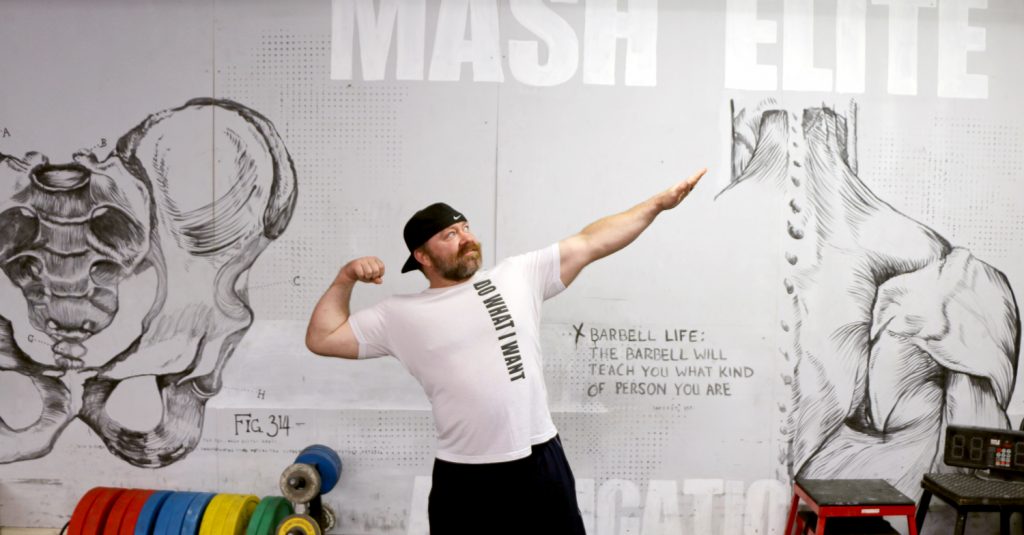
Love this article! Always loved all the strength sports and seeing the evolution of them all makes me very hopeful for new found things to come in the future. Where do you think conditioning fits into place? Not necessarily the long endurance conditioning but the anaerobic type work that a football player would build during an off season program. If you were looking to increase all 5 major lifts but still add work capacity, how many times a week might you add conditioning to a program and what kinds do you think would be best?
I would include sprints along with the strength work towards the end. You could also add in some basic aerobic conditioning another day of two probably on an off day like 15-30 minutes of low intensity cardio preferably rowing or another form that isn’t running at about 70% MHR. I’d go with 2-3 times per week. You could add in prowler pushes, sled drags, and carries on another day for work capacity. These type of exercises are easily recovered from.
Travis, Love the article.
I’ve done week 1 of the program but how do I see the rest of the weeks of the program? Thank you.